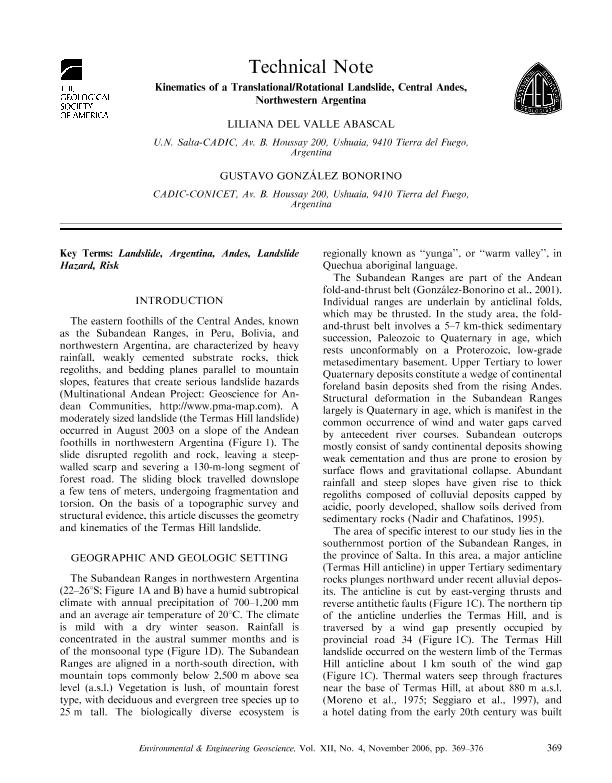Artículo
Kinematics of a translational/rotational landslide, Central Andes, Northwestern Argentina
Fecha de publicación:
04/2006
Editorial:
Geological Society of America
Revista:
Environmental & Engineering Geoscience
ISSN:
1078-7275
Idioma:
Inglés
Tipo de recurso:
Artículo publicado
Clasificación temática:
Resumen
The eastern foothills of the Central Andes, known as the Subandean Ranges, in Peru, Bolivia, and northwestern Argentina, are characterized by heavy rainfall, weakly cemented substrate rocks, thick regoliths, and bedding planes parallel to mountain slopes, features that create serious landslide hazards (Multinational Andean Project: Geoscience for Andean Communities, http://www.pma-map.com). A moderately sized landslide (the Termas Hill landslide) occurred in August 2003 on a slope of the Andean foothills in northwestern Argentina (Figure 1). The slide disrupted regolith and rock, leaving a steepwalled scarp and severing a 130-m-long segment of forest road. The sliding block travelled downslope a few tens of meters, undergoing fragmentation and torsion. On the basis of a topographic survey and structural evidence, this article discusses the geometry and kinematics of the Termas Hill landslide.
Palabras clave:
ANDES
,
ARGENTINA
,
LANDSLIDE
,
LANDSLIDE HAZARD
,
RISK
Archivos asociados
Licencia
Identificadores
Colecciones
Articulos(CADIC)
Articulos de CENTRO AUSTRAL DE INVESTIGACIONES CIENTIFICAS
Articulos de CENTRO AUSTRAL DE INVESTIGACIONES CIENTIFICAS
Citación
Abascal, Liliana del Valle; Gonzalez Bonorino, Gustavo; Kinematics of a translational/rotational landslide, Central Andes, Northwestern Argentina; Geological Society of America; Environmental & Engineering Geoscience; 12; 4; 4-2006; 369-376
Compartir
Altmétricas




